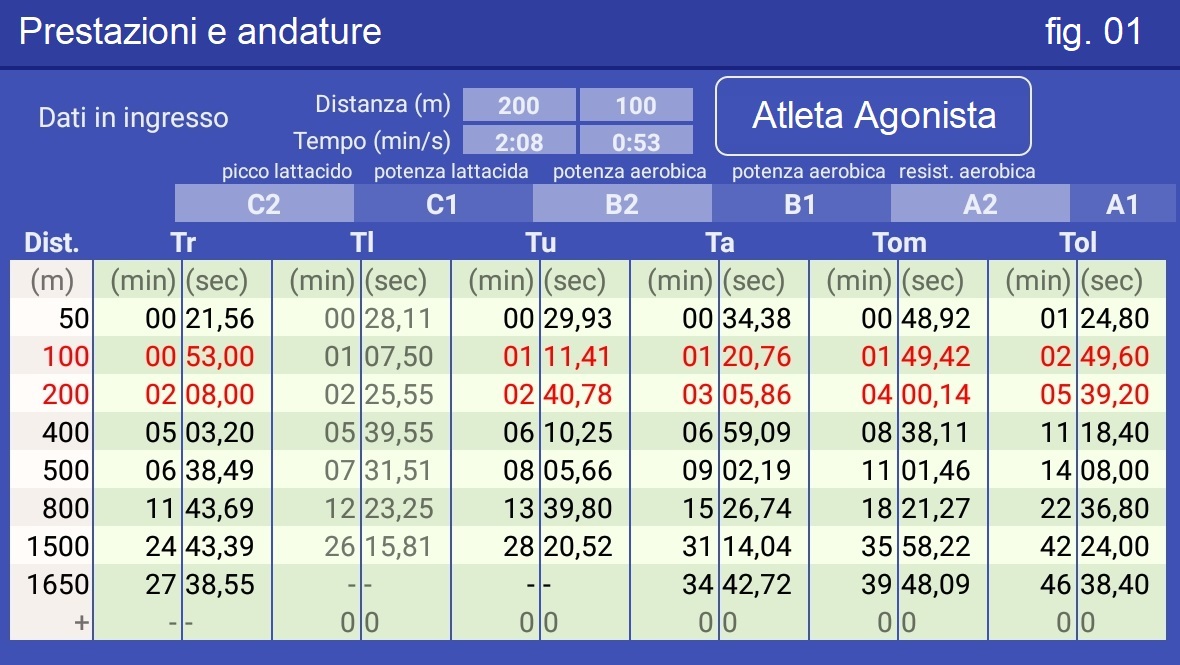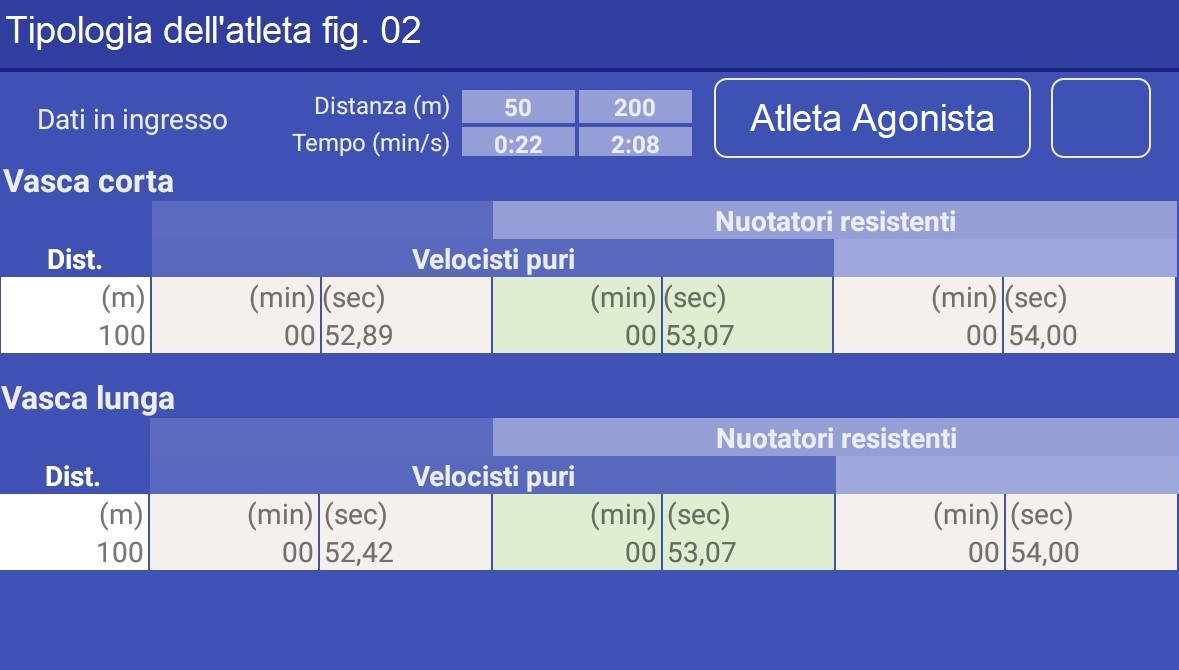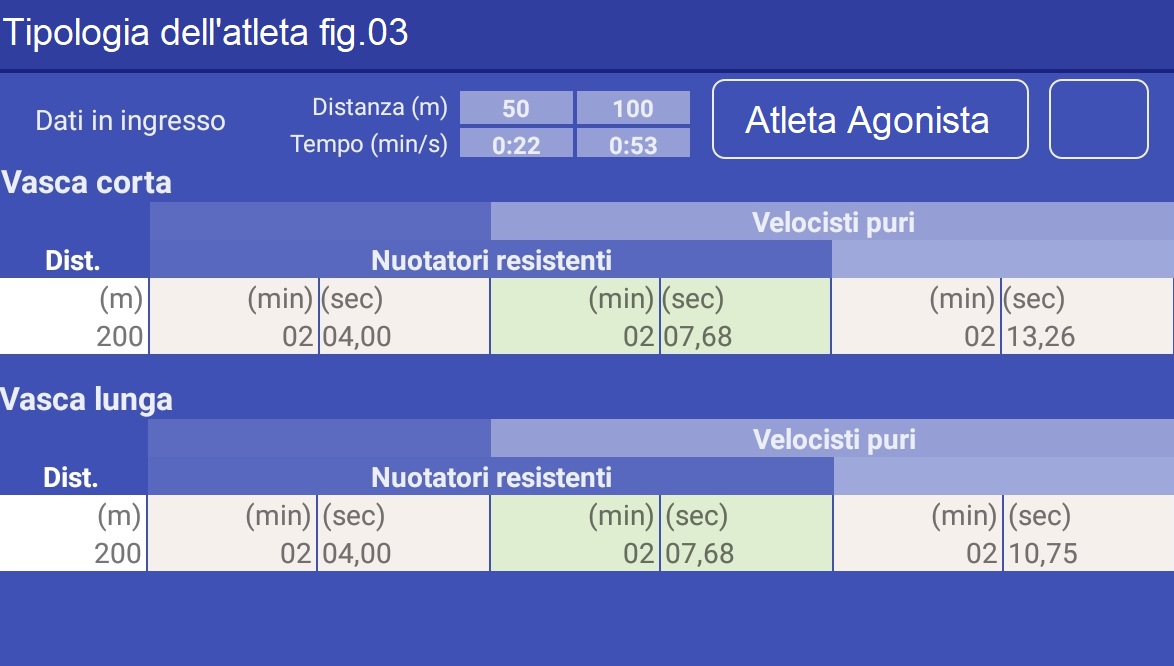- Details
- Hits: 32
To obtain the training pace over different swimming distances, we must start from the swimming performance, obtained over different distances in the same swimming style, it is possible to calculate the best performance of an athlete on any other distance of the same style both in absolute terms (data entry = personal record on the two distances), and the terms relating to the current condition (entry data = times swum in a recent condition).
It is important that the data entered are times obtained in tanks of the same length, thus returning times obtainable at other distances in tanks of the same length.
Example by entering the race times of the pre-competitive athlete with:
Distance 1 (MT) : 100 MT - Time: 53"
Distance 2: (MT) : 200 MT - Time: 2:08
Let's solve the differential equation which in swimming calculates the decrease in average speed as the race distance increases (see fig.01)

The mathematical model returns in the first column the performances obtainable on all the other distances of the races proposed in the first column that of the distances.
The model is valid for both female swimmers and male swimmers regardless of age, but starting from 12 - 13 years onwards.
Fig.01 shows us the paces to keep in training on the different possible distances chosen as the basis of the set of spaced repetitions, to condition the energy systems in a differentiated and specific way.
The objective is indicated by the acronyms A1 A2 - B1 B2 - C1 C2 present in the forecast table: they indicate: the time interval on the various distances useful respectively for:
A1: aerobic recovery phases, with a strong prevalence of the fatty acid oxidation mechanism
A2: aerobic conditioning with use of the aerobic oxidation mechanism with balanced percentages of the aerobic glycolysis mechanism and fatty acid oxidationi.
B1: aerobic conditioning to improve the anaerobic threshold.
B2: aerobic conditioning and development of maximal oxygen consumption (VO2max)
C1: anaerobic conditioning to lactacid tolerance
C2: anaerobic conditioning to lactate tolerance, travel times between TI and Tr
Acronyms in the table:
Tol - travel time of a distance starting from which aerobic conditioning begins to take place, with prevalent oxidation of fatty acids.
Tom - time to travel a distance, repeated in series of suitable extension, to use similar percentages of aerobic energy coming from the oxidation of fatty acids and aerobic glycolysis.
Ta - travel time of a distance repeated in series of suitable extension, to maintain the balance between lactate produced and lactate released (anaerobic threshold)
Tu - time to travel a distance repeated in series of suitable extension, to time to travel a distance repeated in series of suitable extension, to develop the maximum power of the anaerobic system (VO2max) in the presence of significant lactate concentrations
TI - travel time of a distance repeated in series of suitable extension, starting from which it is possible to develop blood lactate in concentrations even higher than those of the race.
Example of 100 mt. prediction calculation. inserting the race times of the competitive athlete (see fig.02)
Distance 1: (MT) : 50 MT - Time: 22"
Distance 2: (MT) : 200 MT - Time: 2:08

Example of 200 mt. prediction calculation inserting the race times of the competitive athlete (see fig.03)
Distanza 1 (MT) : 50 MT - Tempo: 22"
Distanza 2: (MT) : 100 MT - Tempo: 53"





 1
1 2
2 3
3




